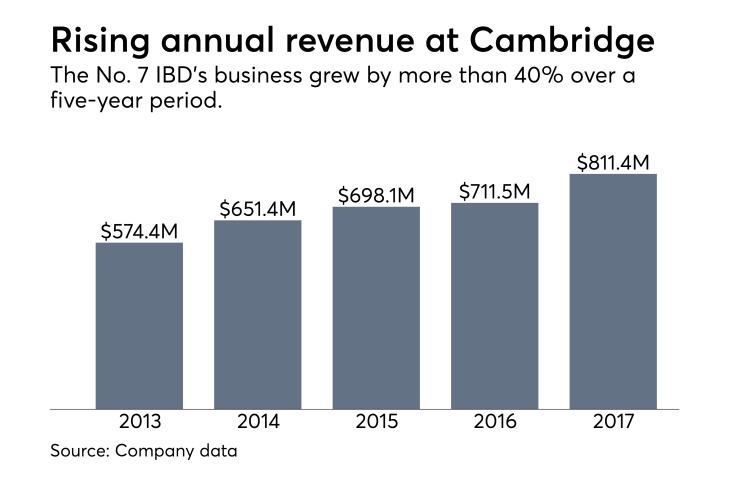As part of a self-described transformation from a broker-dealer to a financial solutions firm, Cambridge Investment Research is pitching RIAs on making so-called reverse breakaway moves.
The

More than 230 new RIAs
Nearly 90% of Cambridge’s advisors carry dual registrations, but the ranks of its hybrid RIA practices have fallen in the past five years. Compliance requirements and back-office capabilities are prompting advisors to move into the corporate RIA space or back into the BD fold from the indie RIA channel, Bell says.
“Whatever way that they need based on their business model, we can support them,” she says. “I think that we will see the reverse breakaway happening more in the future. I don’t think that we’ve seen the pendulum swing yet. That’s where I think it will go.”
-
Retired former CEO Mike Sherzan ran unsuccessfully for Congress in 2016, and he became chairman of the board prior to the deal.
August 23 -
The No. 7 IBD has unveiled five new internal classifications for practices in an effort, it says, to boost the customization of its services for advisors.
June 5 -
The executive suite transition has been years in the making.
January 3
Times are good for RIAs, but a new study suggests firms should be monitoring fees more closely.
IBDs have lost a lot of advisors to RIAs in recent years because they are focusing too much on FINRA-registered advisors and not providing enough flexibility around technology and custodians, according to Papike, president of Cross-Search. She praises Cambridge’s outreach to RIAs.
“I definitely agree that we’re going to see the reverse breakaway happening. I’ve already been seeing it in my business,” Papike says. “Most broker-dealers have done a pretty bad job of communicating their value proposition through their RIA. It’s a great recruiting opportunity for them, if they position it right.”
The number of office assistants supporting Cambridge advisors on an hourly basis from the firm’s headquarters in Fairfield, Iowa, has more than doubled this year to 30, according to Bell. The employees can handle paperwork, phone calls or “anything that they need an office assistant to do,” Bell says.
On the asset management side, Cambridge is building out its WealthPort platform into a more comprehensive and digital “managed account experience,” according to Bell. The firm developed its block-trading tools for advisors with Envestnet’s FolioDynamix.
Cambridge is working to make the portfolio platform more goals-based while giving its registered representatives more choices among advisor-directed strategies and outsourced management. Next year, the firm will add impact investing tools based on social, environmental and faith-based factors.
While the 37-year-old, privately-held firm doesn’t release as much recruiting information as many of its competitors, Cambridge is on pace to add about $60 million in production through recruiting this year, according to spokeswoman Cindy Schaus.
Cambridge has more than 3,200 advisors, with between 200 and 300 of them at affiliated practices that have independent RIAs. The firm generated $459.8 million
“We’ve never really been a pure broker-dealer,” Schaus says. “It’s always been, I think, hard for us to accept that definition because of that.”






